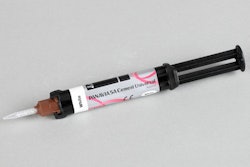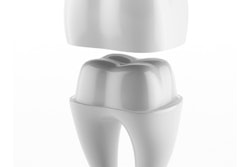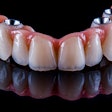
Veneers made with glass ceramic may be more durable than those composed of indirect resin. These findings come from a new study that evaluated the long-term survival rate of restorations placed on maxillary anterior teeth.
Laminate veneers are a minimally invasive way to improve a patient's smile. However, while these restorations are easy to cement and repair, they are also prone to failure.
“The ceramic veneers on maxillary anterior teeth in this study performed significantly better compared to the composite indirect laminate veneers after a decade.”
Researchers from Europe conducted a small, split-mouth study to compare the longevity of composites made from indirect resin and glass ceramic for laminate veneers. Their study, which was published in the Journal of Dentistry (June 7, 2019), included 48 restorations for 11 patients.
Half of the restorations were indirect resin composite (Estenia, Kuraray), while half were glass ceramic (IPS Empress Esthetic, Ivoclar Vivadent). Clinicians then followed the restoration success rate for seven to 10 years.
The researchers observed six failed restorations, all of which were indirect resin. After a decade, the indirect resin composite had a 75% chance of survival, significantly lower than the 100% chance of survival for the glass-ceramic restorations. They also performed significantly worse for color match, fracture, and wear.
"The ceramic veneers on maxillary anterior teeth in this study performed significantly better compared to the composite indirect laminate veneers after a decade, both in terms of survival rate and in terms of quality of the surviving restorations," wrote the authors, led by Marcos Gresnigt, DDS, PhD, from the department of restorative dentistry and biomaterials at the University of Groningen Center for Dentistry and Oral Hygiene in the Netherlands.



















